Heatwave unveils ancient settlements in Wales
- Published

The Iron Age hillfort of Gaer Fawr near Lledrod, Ceredigion, looking across the parched landscape
Ancient hillforts and Roman settlements have been revealed by the heatwave.
The dry spell has left parched fields with unmistakable "crop marks" painted into the landscape.
The Royal Commission on the Ancient and Historical Monuments of Wales (RCAHMW) has been busy recording the details - before they disappear when it next rains.
Sites across Wales have been captured from the air.
The crop marks are made by vegetation drawing on better nutrients and water supplies trapped in long-gone fortification ditches - leading to lush green growth that stands out.
HOW IT WORKS:
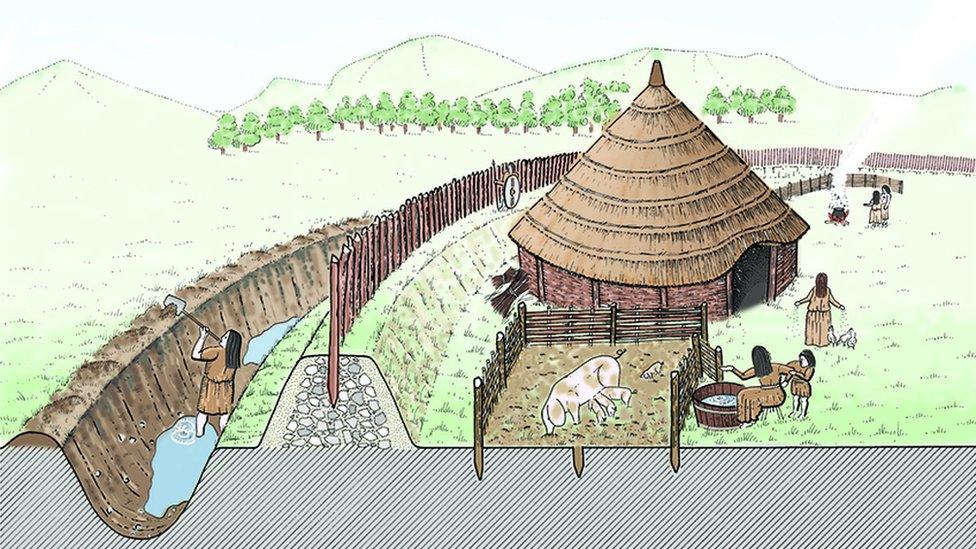
Ancient settlements are scattered across Wales - such as Iron Age hillforts and Roman fortifications
Most ancient settlements added fortification or drainage ditches around them.
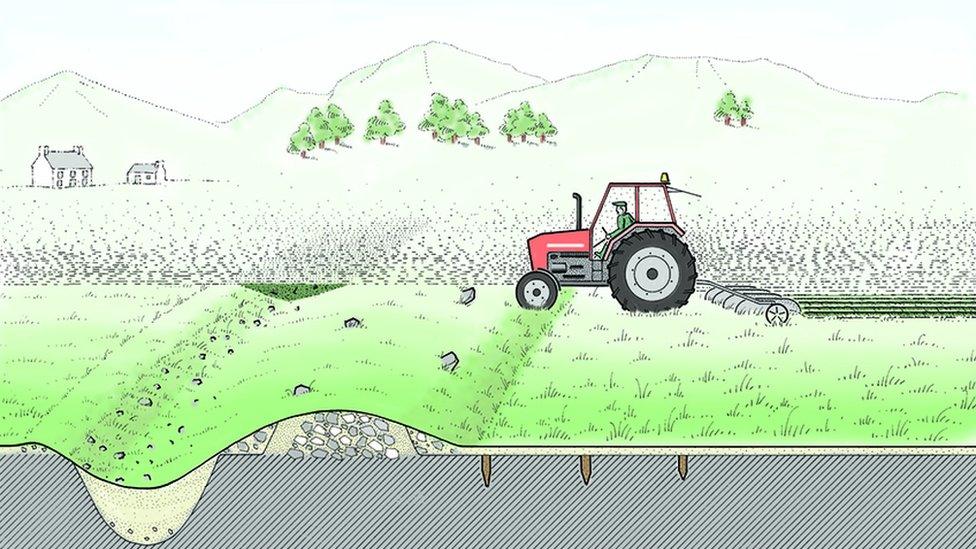
Over the centuries, the settlements disappear and farming takes place
When the settlements disappeared, those ditches became filled in - but it also meant that soil was deeper in those areas.
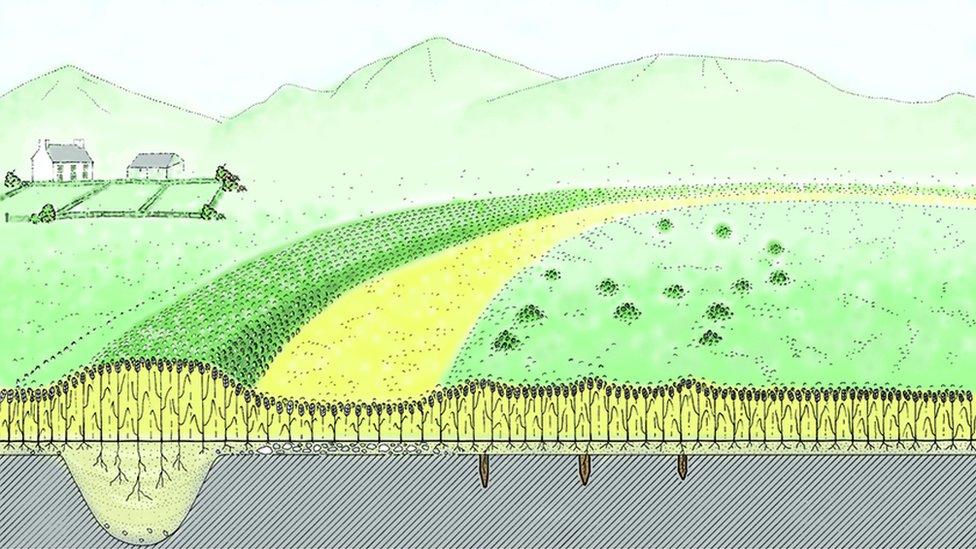
When the land dries out in the prolonged heat, the old fortifications retain moisture, so crops are more visible
Deeper top soil sections covering the old settlement ditches means those areas hold onto more water and nutrients during intense dry spells - and crops are very quick to take advantage of it - growing thicker, taller, and greener.
It is easy to spot from the air:
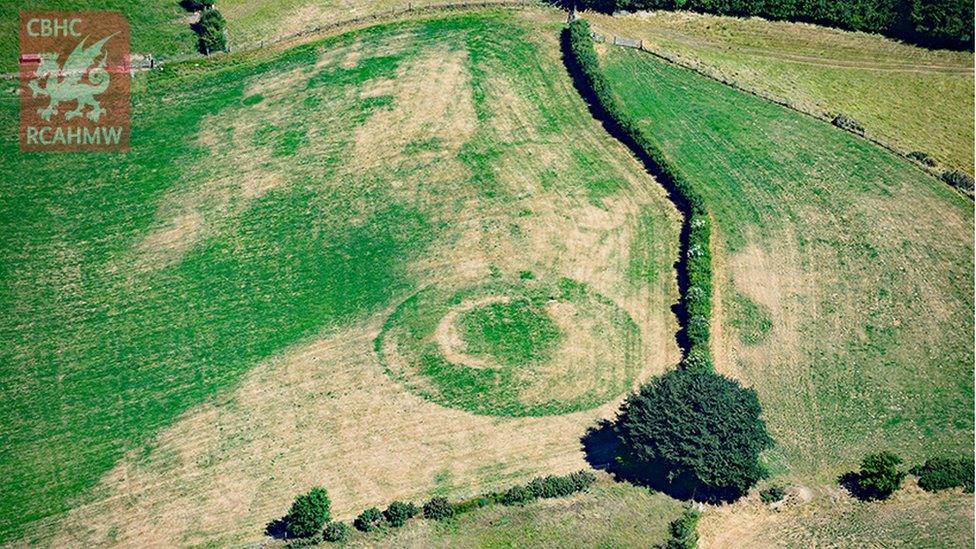
The almost ploughed-down medieval castle mound at Castell Llwyn Gwinau in Tregaron, Ceredigion, showing clearly under parched conditions
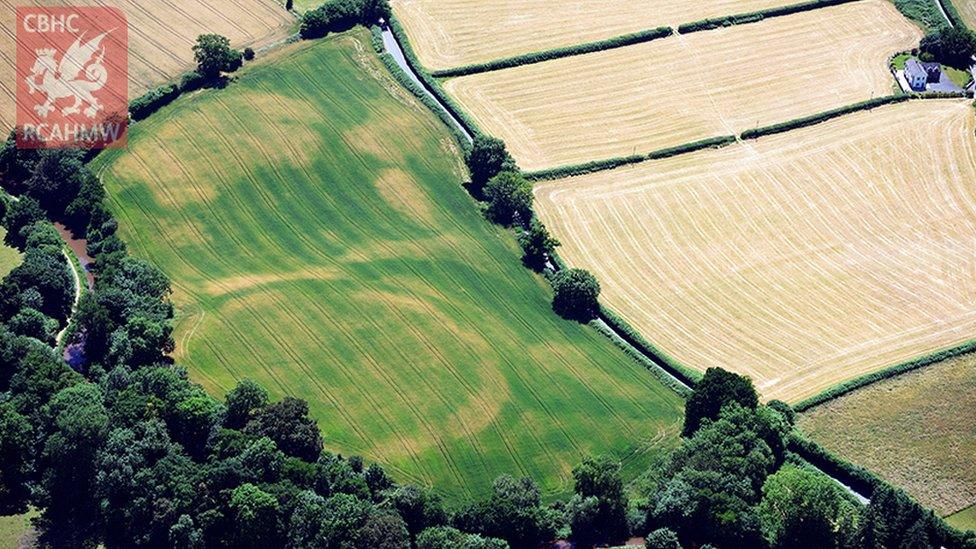
The buried ramparts of Cross Oak Hillfort, Talybont-on-Usk, showing as crop marks in Powys.
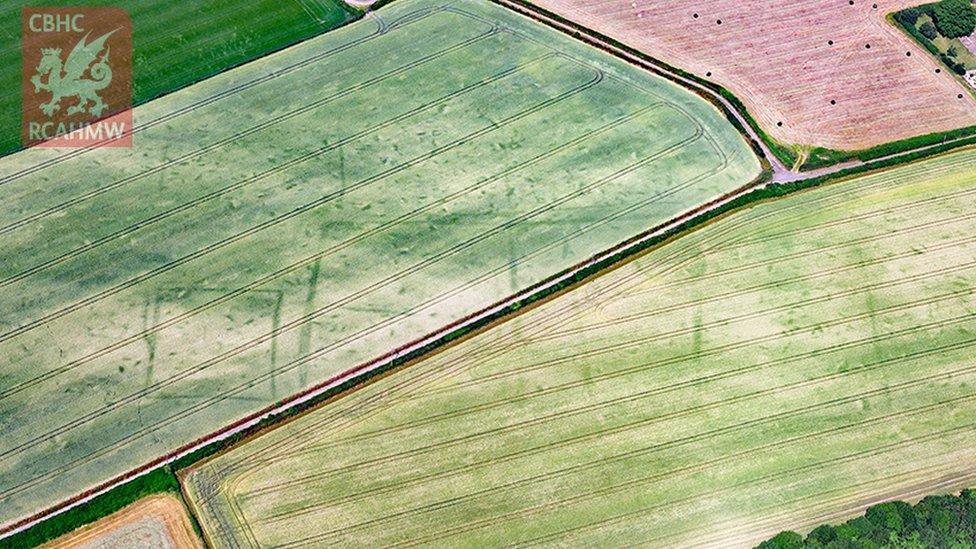
Extensive crop marks of Trewen Roman farmstead or villa, Caerwent, Monmouthshire
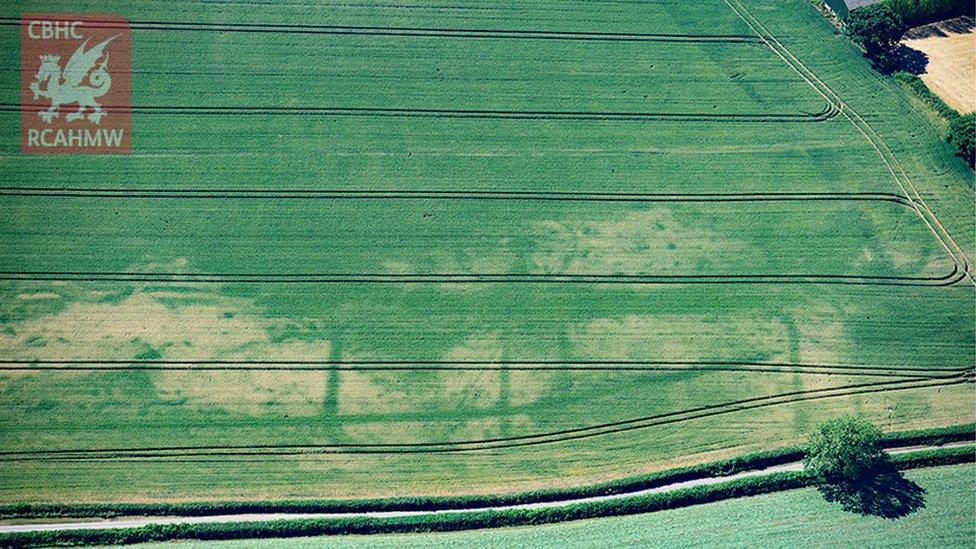
A newly discovered Roman fortlet near Magor, Monmouthshire, emerging in ripening crops

Newly discovered crop marks of a prehistoric or Roman farm near Langstone, Newport
- Published3 July 2018
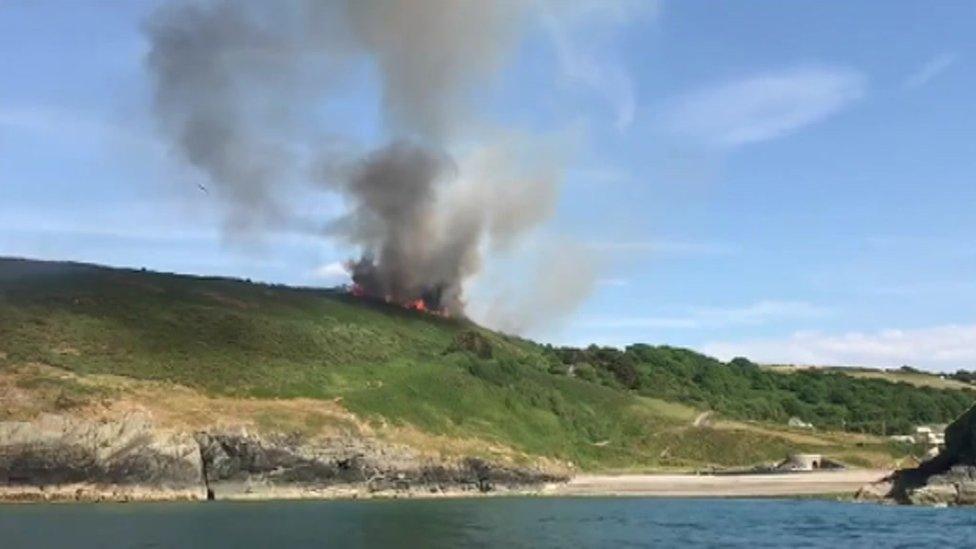
- Published2 July 2018
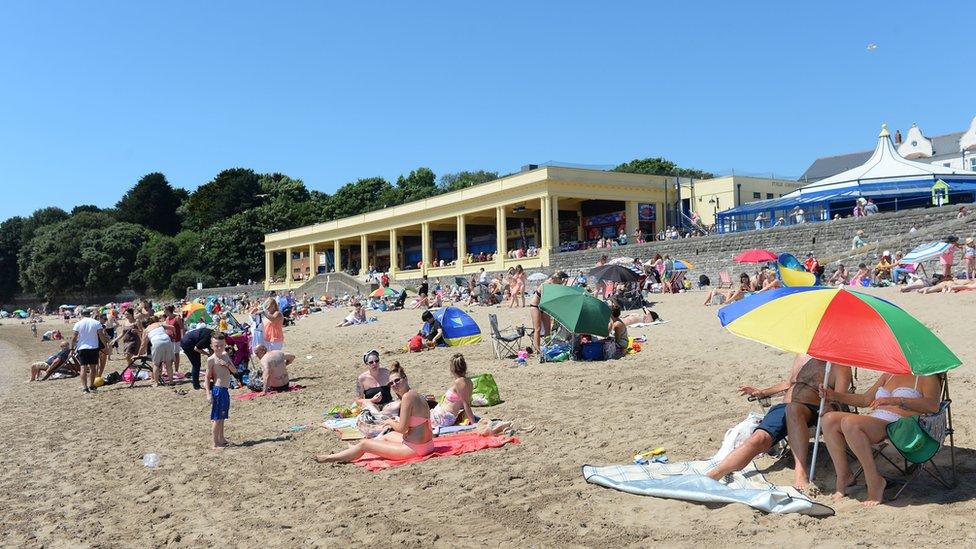
- Published2 July 2018

- Published4 July 2018
